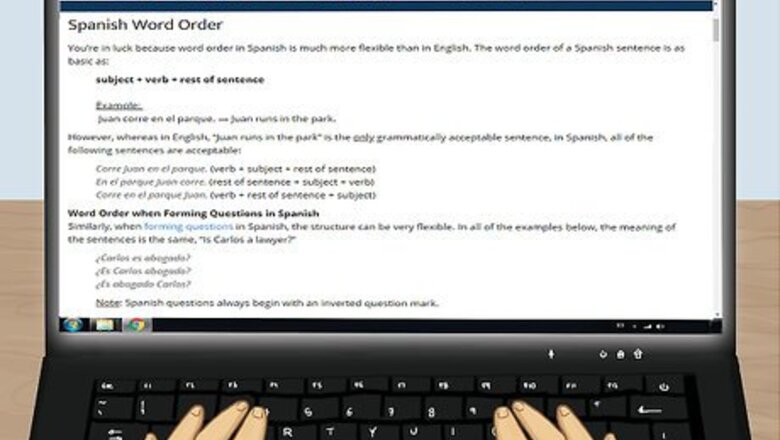
views
Becoming Fluent in a Language
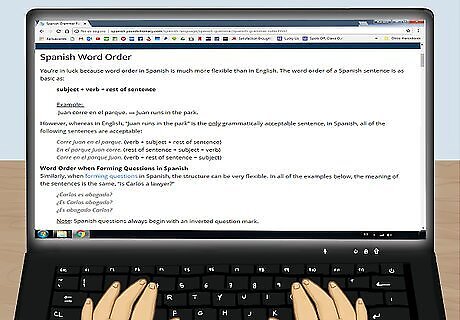
Read the language’s rules on grammar. Many times sentence structure is the most confusing part of learning a language. Each language has its own rules and understanding these rules is a key part of forming sentences. Read a bunch of sentences and translations, trying to determine how subjects, actions, and descriptive words are combined. You can find information on sentence structure by reading study books or by searching for free language lessons online. For example, English follows a subject-verb-object pattern, such as in “He ran to the store.” Japanese uses a subject-object-verb pattern, so “ran” would appear at the end of a sentence.

Master basic phrases that are useful in everyday life. Come up with a list of the most essential words you need to know. There is no use learning the word for “aardvark” in Swahili if you are never likely to use it. Think of words you use all the time and get familiar with them first. For example, if you’re an exchange student in Greece, you might need to introduce yourself, ask for directions, and order food. While you might need to know the Swahili word for “aardvark” someday, you can learn it at a later date when the time comes.

Translate words in your head. The biggest step you can take in mastering a new language is learning to think in it. You don’t have to start with fluent conversation. As you’re out and about, make a point of translating what you see into the language you want to learn. You may soon find out your language skills have improved without shuffling through flashcards for hours at a time. Speaking the words out loud can help solidify them in your memory. Eventually, you will be able to translate the words automatically without saying them.

Use your vocabulary to write in your new language. Writing involves more than putting words on flashcards. Try generating a few descriptive paragraphs or sentences doing what you know. Writing helps you put words into action, figuring out how they are used in conversation. As you learn new words and phrases, you can combine them in new ways to improve your skills. Start out small. When you’re starting out, you might stick to simple descriptions like, “Hi, my name is John Doe. I am 18. I am from America.” Writing involves fluency you can’t get from reciting flashcards, so use it as an opportunity to expand your vocabulary and make your language skills more dynamic.

Speak as much in your new language as possible. Try to speak only in your new language when you can. Think of what you want to say, translate it, then say it aloud. Doing this helps you memorize the language and become more fluent in it. If you can’t think of a way to say what you want, use that as an opportunity to look up new words. Remember that being a polyglot means using languages in conversation. If you only memorize lists of words, you may find yourself unable to form sentences in a conversation.
Choosing a Learning Style
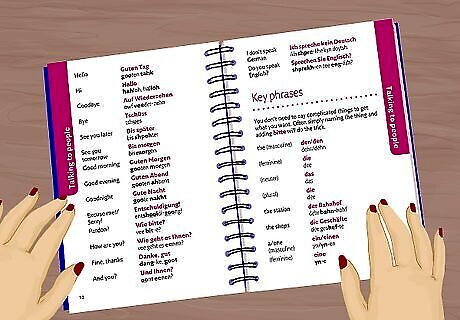
Get phrasebooks to start studying basic terminology. Phrasebooks are lists of expressions made for travelers to foreign countries. These lists give you an example of the sentence structure a language uses and what kind of words are useful. Find a phrasebook in the language you wish to learn and treat it as a foundation you can build upon as you learn more. Look online for phrasebooks or lists of phrases. Also check at bookstores or your local library.
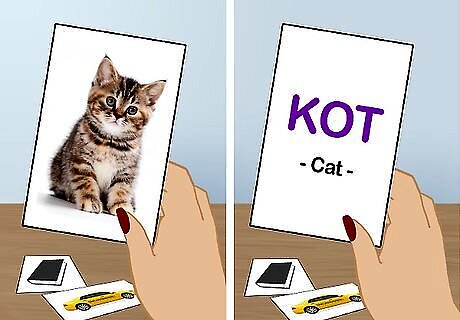
Make flashcards with pictures on them. Flashcards are the most basic of study materials and most people make them that way. For more effective flashcards, design them to be memorable. Good flashcards provoke your senses. A good way to do this is to find a memorable picture related to the word you want to memorize, then paste it onto the back of the flashcard. For example, if you want to learn how to say “cat” in Russian, put a picture of your cat or find a funny cat picture online to put on the back of the card. This makes the word far easier to recall than when you write “cat” on the back.

Download language speaking apps to help you practice. Phone applications give you chance to fit in a quick study session when you’re on the go. They are similar to flashcards, are available for many different languages, and are often free to use. Many of them have pictures and audio to help you learn. For example, try Duolingo or Anki. Both are available for Apple and Android devices.

Take classes to help you learn in person. If you prefer engaging with a professional, a class can get you started. You do need to stick to the course curriculum, but this may be right for you if you struggle to schedule time to study on your own. Look for classes at community colleges in your area or seek out private tutors. Ask the teacher any questions you have, including about how to improve your study sessions. Also engage with other students so you can learn faster. You may also be able to find classes online. Read up about how the class works, the cost involved, and how other students rated the class.

Read books in multiple languages to improve your fluency. The best way to become more fluent is to see how words and sentences combine. Get a professional translation of a book you know well, then use it to master new words and sentence structure. Start with books written in the first language you plan on learning. Later on, you can even try translating those books into different languages you wish to learn. Choose books that are relatively simple and straightforward. For instance, books like Harry Potter or The Hunger Games are designed to include younger audiences, so they are much easier to translate than a philosophical treatise. You may be able to purchase books that include a built-in translation to your native language. If this isn’t an option, keep a copy of the book in your native language nearby and use it for reference.

Listen to recorded dialogue to learn through audio. You may have heard stories of people picking up a language from watching cartoons or other shows. TV shows, games, and songs are a few resources that can help you learn. When you listen to the audio, make use of the words and their context to figure out their meaning. Look up any words you don’t know. TV is a good place to find dialogue. For instance, watch American shows to learn English or Spanish soap operas to learn Spanish. You may be able to find podcasts that contain spoken dialogue in the language you want to learn. Also look online for Youtube videos or other media.
Practicing Your Skills with Others

Attend meetings where people speak in the language you want to learn. Take any chance you get to speak to other people who know the language you want to learn. Look for language groups in your area or visit businesses where speakers gather. Listen to them and talk to them to improve your skills. Esperanto speakers, for example, host gatherings across the world. These meetings are the perfect place to learn and practice your language. Also look for online websites or apps like HelloTalk that allow you to connect with others from afar.

Host language speakers if you have room in your home. If you can’t find people who speak the language you want to practice, bring them to you. You can invite people to visit you from anywhere in the world. By giving them a place to stay, you get plenty of opportunities to have conversations in the language you wish to learn. Sign up on a site such as CouchSurfing, then register as a host. You can invite people you are interested in meeting or attend community events in your area.

Travel to a foreign country to learn its language. There is no better way to learn a language than to immerse yourself in it. If you are able, take a trip. Consider staying with a host or hostel. Take time to talk to the country’s residents and learn more about the language. You can download translation apps, such as Google Translate, on your phone, but try not to depend on it. Make it your goal to learn how to speak fluently on your own.
Mastering Multiple Languages

Choose a straightforward first language to learn. The easiest languages to learn are ones that don’t have a lot of tough, unfamiliar rules. If the new language is wildly different from what you know, it’s going to be extra difficult to learn. If you have a strong desire to learn a specific language, you should start there, but look for easier options if you aren’t passionate about any language in particular. When choosing a language, look for the grammatical structure of a sentence, what kind of alphabet the language uses, and other distinctive features that can challenge a new learner. For example, many English speakers start with Western European Romance languages like Spanish, French, and Italian because they are all very similar. Proximity is an appropriate way to choose a language. Many people in China, for instance, learn both Mandarin and Cantonese. For a simple choice, try Esperanto. Although it is an invented language, it is used everywhere and doesn’t have complicated grammar or vocabulary rules.

Pick up a new language because you have a desire to learn it. Becoming a polyglot isn’t about looking cool. Many people may try to learn a few vocabulary words in a bunch of different languages. Since they don’t know the language and can’t hold a conversation in it, they aren’t truly polyglots. Having a desire to master a language makes the learning process much easier. If you don’t have the desire to learn a complex language like Japanese, for instance, you may not study often or remember words. Being passionate pushes you to learn. For example, someone in Belgium might learn French, German, Dutch, and English because it helps them communicate with the people around them.

Study 1 language at a time. You may feel tempted to dive into multiple languages right away, but you are better off focusing on 1 until you have a firm grasp of it. Multiple languages means multiple focuses, so you won’t be devoting enough time to any 1 of them. In addition, you will likely end up confusing words and grammar rules between them. Give yourself plenty of time to gain a good understanding of how to speak your first language. Avoid rushing through it. You will learn more in the long run if you take your time.
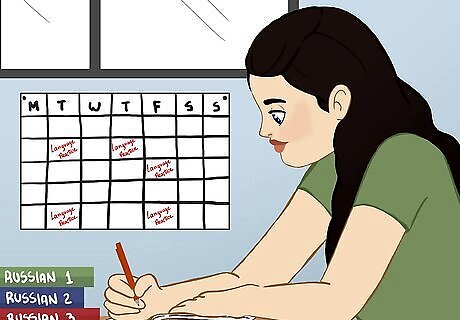
Practice studying language as often as possible. Find study techniques that work for you and stick to them. Flashcards are a good starting point, but think of putting your language skills to use. Speaking the language out loud, listening to other people speak, and writing translations are a few ways to help solidify your skills. Aim to study your chosen language about 15 minutes a day, if possible. If you can study at least a few times a week, you should have a much easier time remembering and using what you learn.
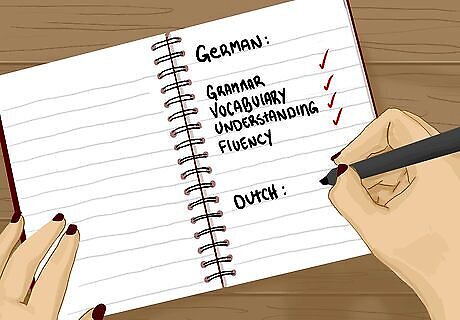
Move onto another language once you reach an intermediate level. You don’t need to be as good as people who grew up speaking the language, but be able to have a conversation in your first language. By the time you pick up a second new language, you should know the first language’s rules and a selection of useful vocabulary words. This way, you won’t forget what you learned while you study the new language. For example, if you can have a casual conversation in French, chances are it won’t interfere with your English studies. You know French well enough to not confuse it with English. Think of being at an intermediate level as being at a conversational level. You may not be a professional translator, but you know how to use verb forms and conversational phrases.
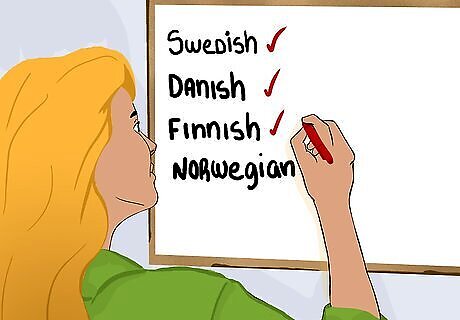
Focus on languages from the same family for an easier time learning. Choosing a language closely related to the first language you learned gives you an advantage. You start over when learning the new language, but related languages are very similar. They often have similar sentence structure and even use some of the same words. This isn’t the only way to choose new languages, but it is the quickest way to become a polyglot. For example, Northern European languages like Swedish, Danish, and Norwegian are similar. Once you learn 1 of them, the rest become easier to pick up. If you are passionate about a particular language, you should study it even if it isn’t like the first language you learned. Learning it will likely still feel easier because you have practice mastering foreign languages now.
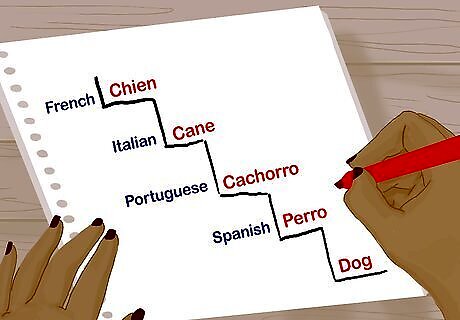
Translate words from your first language to your new language. Imagine a ladder with rungs. The word from your home language is on the bottom, while the equivalent word from your second language is on the next rung. Every time you learn a new language, translate the word from the highest rung and place it on a new rung. If you translate everything from the language you know best, you may quickly get confused. Visualizing a ladder can help you keep words separate so you don’t mix up languages when trying to speak. For example, if you speak English, imagine the word “dog.” Place the Spanish translation “perro” above it. Do the same for any other languages you learn.
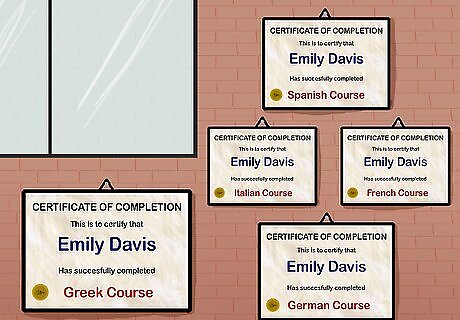
Study until you are fluent in several languages. The number of languages you need to know to be a polyglot differs depending on who you talk to. Aim to master around 4 of them, reaching a conversational level in each. Fluency means you understand the language and are able to speak it. An important part of being a polyglot is being able to use the languages. Memorizing a few vocabulary words isn’t enough. If you’re ambitious, you can set your sights on becoming a hyperglot. Hyperglots are fluent in 10 or more languages.




















Comments
0 comment